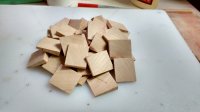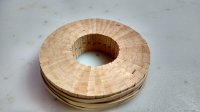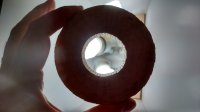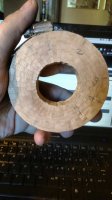Bob, this has be some journey and a learning experience for you and probably most of use. Thanks for taking us along. What are your feeling now that it is finished? Was it worth the effort other than being a learning tool, do you like the final shape?
In my opinion I think for the amount of work and time you spent you created a mediocre bowl. In doing so we have developed some valuable experience for working with very small segments. An example is shown in the bottom rings where a tiny misalignment or out of round ring had a major impact. Another is turning thicker rings and splitting them for easier glue up. This is all going to pay off on your next bowl or vase with a complicated design. Do you have your next one in the planning stage? If so I hope you will once again post the build set of photos.
Stuart
In my opinion I think for the amount of work and time you spent you created a mediocre bowl. In doing so we have developed some valuable experience for working with very small segments. An example is shown in the bottom rings where a tiny misalignment or out of round ring had a major impact. Another is turning thicker rings and splitting them for easier glue up. This is all going to pay off on your next bowl or vase with a complicated design. Do you have your next one in the planning stage? If so I hope you will once again post the build set of photos.
Stuart





